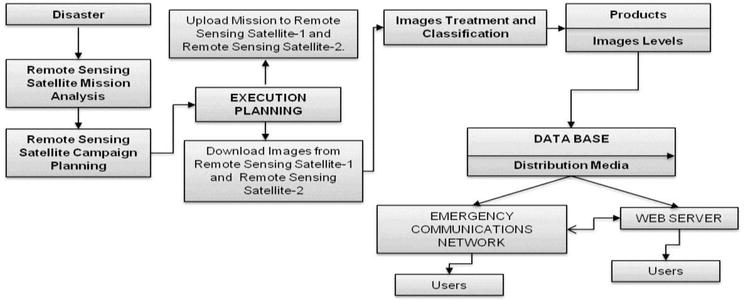The relation between the reference systems B1950.0, J2000.0 and the orbital plane.2.2.1. The Basic Equations for the TransformationApplying the duality property (see Section 2.1) to the spherical triangle ABC of, we get(1.1)(1.2)(1.3)(1.4). (1.5)From the spherical triangle ABC of we get(2.1)(2.2)(2.3)(2.4)(2.5)Clearly the right hand side of each of the Equations (2) contained mixture of the unknown quantities (dented by primes) and known quantities (without primes) e.g., while their left hand sides are known quantities. To overcome this difficulty, we have to apply the transformation rules of Equations (1) to Equations (2) and we get for the transformation from the formulae:(3.1)(3.2)(3.3)(3.4)(3.5)2.2.2. The Basic Equations for the Transformation toBy the same way as above, we get for the transformation from the formulae:(4.1)(4.2)(4.3)(4.4)(4.5)3. Equatorial and ecliptic orbital elements of celestial body.(7.4). (7.5)Equations (7) are to be used to obtain from.Also(8.1)(8.2)(8.3)(8.4).


Unified Transformation Formulae for Equatorial and Ecliptic Orbital ElementsFor practical applications, we can unify the two sets of Equations (7) and (8) as:(9.1)(9.2)(9.3)(9.4). (9.5)where・, the given elements.・, the required elements.・ h, an integer takes the values or such that:・, for the transformation from the ecliptic orbital elements to equatorial orbital elements.・, for the transformation from the equatorial orbital elements to the ecliptic orbital elements.Since the right hand side of each of the above equations is known (note is known angle), consequently we can get from(10.1)(10.2). Computational Developments of J2000.0 and B1950.0 Keplerian Elements Transformations6.1. Mathematica Module: KeplerB1950TJ2000・ PurposeTransfer the Keplerian orbital elements with respect to reference system B1950.0 to the Keplerian orbital elements with respect to reference system J2000.0 and vice versa.・ Input(in radian), h.・ Output・ (in radian).・ User defined proceduresModule: arctan (Appendix A).Module: angle (Appendix A).・ Module list6.2.
Numerical Examplesgives the transformations of the orbital Kepler elements 1950.0 to the corresponding elements J2000.0 and vice versa as computed from the above Module.7. Computational Developments of Equatorial and Ecliptic Orbital Elements Transformations7.1. Mathematica Module: TranElements・ Module list7.2. Numerical Examplesgives the transformations of the ecliptic orbital elements to the equatorial orbital elements and vice versa. Transformations of the ecliptic orbital elements to the equatorial orbital elements and vice versa.In concluding, the present paper introduced two unified and simple algorithms that are capable of executing calculations in both directions and in one program run to the 1) transformations between J2000.0 Keplerian orbital elements and B1950.0 elements and 2) transformations between the equatorial orbital elements and the ecliptic orbital elements. The algorithms are elaborated using Mathematica package, which is qualified for accurate computations.
The proposed algorithms are checked by numerical examples given in and.References. Capitaine, N. And McCarthy, D. (2004) American Astronomical Society Meeting 204, #28.01. Bulletin of the American Astronomical Society 36, p.694. Standish, E.M.
(1982) Conversion Positions and Proper Motions from B1950.0 to the IAU System at J2000.0. Astronomy and Astrophysics, 115, 20-22. Murray, C.A. (1989) The Transformation of Coordinates between the Systems of B1950.0 and J 2000.0, and the Principal Galactic Axes Referred to J2000.0. Astronomy and Astrophysics, 218, 325-329.
Aoki, S., Soma, M., Kinoshita, H. And Inoue, K. (1983), Conversion Matrix of Epoch B1950.0 FK 4-Based Positions of Stars to Epoch J2000.0 Positions in Accordance with the New IAU Resolution. Astronomy and Astrophysics, 128, 263-267. Todhunter, M.A.
Fundamental Ephemeris Computations Pdf Download
(1925) Spherical Trigonometry. Macmillan & Co., London. Seidelmann, P.K. (2005) Explanatory Supplement to the Astronomical Almanac.
University of Science Books, Sausalito.Appendix A: The User Defined ProceduresA-1 User defined procedure: angleMathematica Module: angle・ PurposeTo reduce the angle x in radian to the interval・ InputThe value of x・ OutputThe angle・ User defined proceduresNone・ Module listangle x: Module, Mod x, 2・ Notes1. The above procedure is valid for positive as well as for negative angles.2. For all values where n is positive integer number, the reduced angle is equal to zero.3. The given angle x and the reduced angle are the same if.A-2 User defined procedure: Arctan (y/x)When the inverse function of “tan” is taken an ambiguity arises which has to be cleared up. The angle lies in the first quadrant if, in the second quadrant if, in the third quadrant if, finally in the fourth quadrant if. To obtain the correct quadrant, add or subtract or from the angle.Mathematica Module: arctan・ PurposeTo find the correct quadrant of the angle in radian.・ InputY, x・ OutputThe angle in radian.・ User defined proceduresNone・ Module list・ NotesThe usage of the Mathematica built in ArcTany/x and the function arctany, x of the above procedure for calculating the angle are illustrated as follows.・ If is negative, the computer cannot determine the source of this negative sign, is it from the denominator or from the numerator, so it evaluates ArcTan L an then multiply the result by (−1). For examples:・, while arctan4, −10 of the above procedure gives.・, while arctan−17, 4 of the above procedure gives.・ If is positive, the computer cannot determine the source of this positive sign, is it because both denominator and numerator are positive, or both are negative, so it evaluates ArcTanL.
For example:・, while arctan−15, −6 of the above procedure givesThe only case in which ArcTany/x = arctany, x is when.